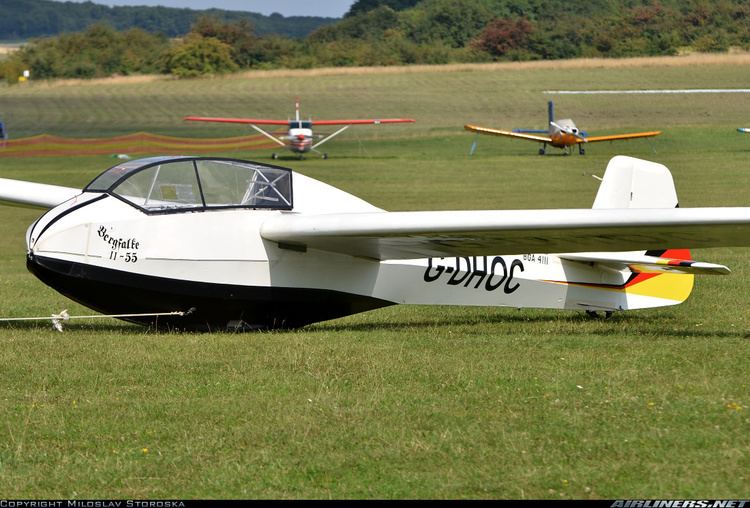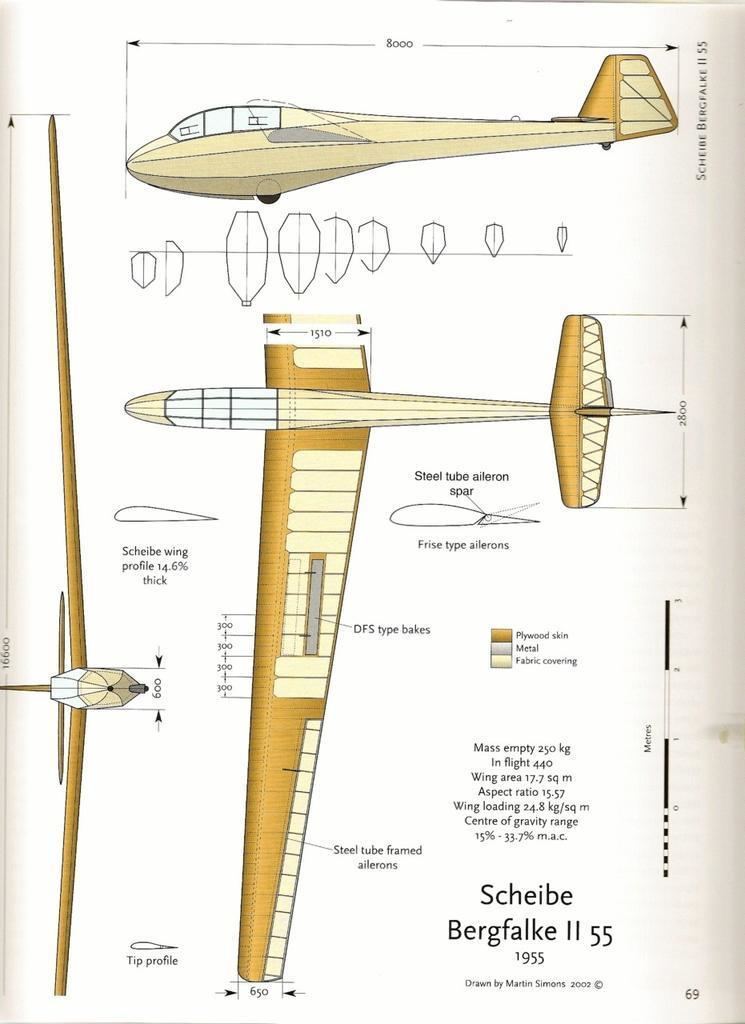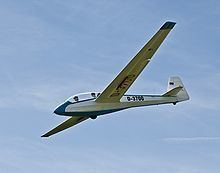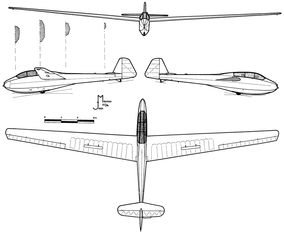Length 8 m First flight August 5, 1951 | Wingspan 17 m | |
 | ||
Aerotow scheibe bergfalke iii piper pa 25 pawnee oldtimer vikend ak brno medlanky 2016
The Scheibe Bergfalke (German: "mountain hawk") is a German glider designed by Egon Scheibe as a post-World War II development of the Akaflieg München Mü13 produced before and during the war.
Contents
- Aerotow scheibe bergfalke iii piper pa 25 pawnee oldtimer vikend ak brno medlanky 2016
- Design and development
- Variants
- Specifications Bergfalke II55
- References

Design and development
The prototype flew on 5 August 1951 as the Akaflieg München Mü13E Bergfalke I and by the end of the year, Scheibe had established his own works at the Munich-Riem Airport to produce the type as the Bergfalke II. It was a mid-wing sailplane of conventional design with a non-retractable monowheel undercarriage and a tailskid. The fuselage was a welded steel structure covered in fabric and enclosed two seats in tandem. The wings had a single wooden spar and were covered in plywood.

Subsequent versions introduced forward sweep to the wings, a more aerodynamic canopy, airbrakes, and a tailwheel in place of the tailskid. By 1982, Scheibe had built over 300 of these aircraft, and Stark Ibérica built a number of the Bergfalke III version under license in Spain. Scheibe also developed a motorglider version as the Bergfalke IVM but this did not enter production.

In 1976, two Bergfalke motorgliders participated in the Sixth German Motor Glider Competition. Later, one of these aircraft set a world 300 km triangle record.
Variants

Specifications (Bergfalke II/55)
Data from The World's Sailplanes:Die Segelflugzeuge der Welt:Les Planeurs du Monde
General characteristics

Performance
